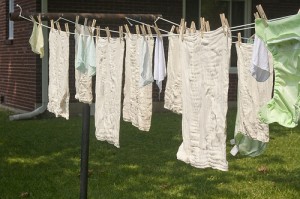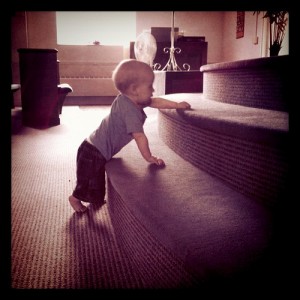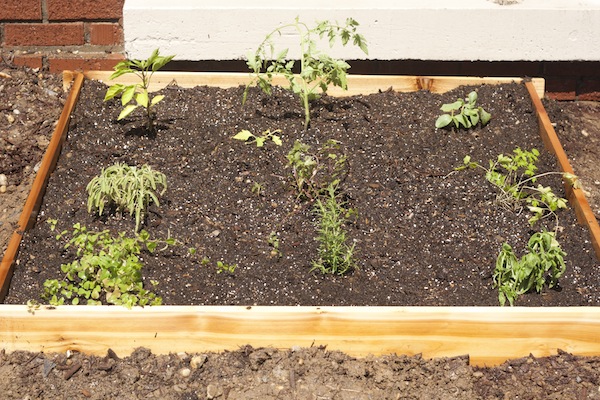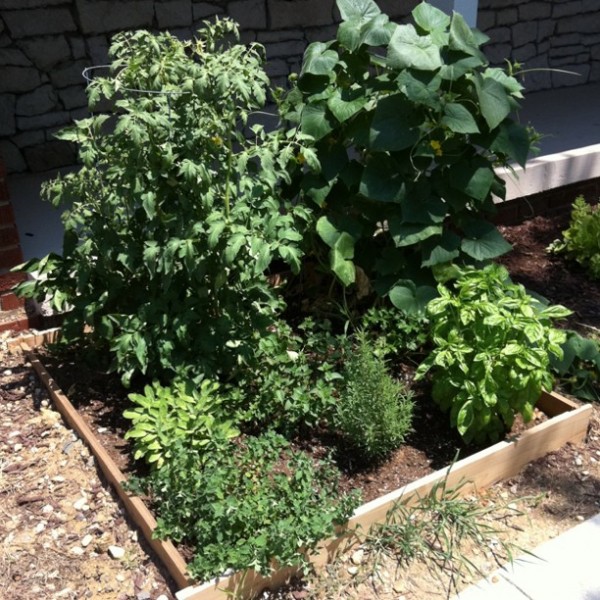 For the last two months or so, we’ve been line drying our laundry on the clothesline in our backyard. I’ve developed a pretty good system, and I’ve learned a few things about what works and what doesn’t for us, so I thought I’d share some of my discoveries.
For the last two months or so, we’ve been line drying our laundry on the clothesline in our backyard. I’ve developed a pretty good system, and I’ve learned a few things about what works and what doesn’t for us, so I thought I’d share some of my discoveries.
For the most part, I don’t have many complaints. It’s a relatively easy way to reduce energy consumption and shave some money off your monthly electricity costs. Unfortunately, I’m still not sure exactly how much we’re saving. We started line drying pretty much right after we moved into the house, and with the heat wave and increased square footage, our electricity bill has definitely gone up from what we paid in apartments. I didn’t establish a base line, so I’m not sure what it would cost if we were using the dryer. I’m sure I’m saving something, though, and decreasing our footprint, so it’s worthwhile to me either way.
I’ve developed a system that works pretty well for me, but it’s certainly a lot more involved than my previous laundry system, which was basically “You’re running low on underwear? I guess I’ll do laundry today.” I don’t do laundry every day. I wish I was disciplined enough to do laundry every week, because it would make things easier on myself, but I’m not. I usually wash everything every other week (aside from diapers, which are washed 2-3 times a week).
I’m much more aware of the weather forecasts now, so I can plan ahead for the best sunny days. My lines hold about half of two weeks of laundry, so I usually split it up over two days. I try to do laundry when we have two sunny days back to back, so I can get it all done relatively quickly.
The night before laundry day, I separate everything by color — whites, colors, and then towels and jeans. I put in a load first thing in the morning. When Judah goes down for his morning nap around 10 a.m., I get the first load onto the line. Sometimes I’m lucky, and he sleeps long enough that I can get the second load out, too, before he wakes up. Sometimes he has to come outside with me and hang out in the Exersaucer while I hang clothes.

My clothesline is half shaded by a large tree, so I try to make sure that bulkier items like jeans are hung on the sunny side. This ensures that they dry completely. Thinner items like t-shirts dry relatively quickly even without a lot of sunshine, so they can hang in the shade.
Sunshine is a remarkable natural stain remover, so I always hang anything with stubborn stains in direct sunlight. Usually after 8 hours in the sun, even the most stubborn stains are completely gone. It’s like magic.
I leave them out there all day — usually until around 8 p.m. after Judah is in bed. It works out nicely, because I can bring the clothes in and fold while I’m watching television, and I don’t have to worry about entertaining Judah because he’s sleeping.
About 90% of our laundry is line dried. There are a few things I don’t line dry, though.
Diapers – It’s a shame that I can’t get line drying diapers to work for me, especially since diaper laundry is the main reason I decided to start line drying. Unfortunately, no matter what I try, line drying makes my cotton prefolds feel like roof shingles. They’re scratchy and stiff, and I just can’t imagine it’s very comfortable on Judah’s skin. I tried vinegar in the rinse cycle. It didn’t make much difference. I tried fluffing them in the dryer. That helped a little, but they weren’t as fluffy as I’d like, and to be honest it felt like the extra step defeated the purpose of line drying.
Stained diapers go onto the line after they’re dry so I can take advantage of the remarkable stain removing ability of the sun. Other than that, diapers go into the dryer.
Towels – I have the same problem with towels as I do diapers — they’re too stiff and scratchy when line dried. We hang towels to dry in the bathroom so we can reuse them for a week, so our towel laundry is minimal anyway.
Socks and underwear – We don’t have a fence in our backyard. Our clothesline is mostly shielded from view by our neighbors’ garage, but if they were out doing yard work on the other side of their garage, they could easily see it. To maintain our privacy and spare our neighbors from seeing our undies, I chose not to line dry them. I suppose I could conceal them on the back line or devise some sort of rack for hanging them inside. I may do that. For now, I don’t mind throwing them into the dryer with the towels. Socks are just tiny, and it’s a pain in the butt to hang a million of them, so I throw those in the dryer, too.
Some items — like my husband’s polos — tend to stretch out and start to look saggy after several line dryings. When that happens, I go ahead and use the dryer to shrink them back up a bit.
I’m happy with our system, but line drying is harder work — especially in this heat wave. I try to get the laundry out in the morning and take it down in the evening to avoid the hottest part of the day. Even so, standing in direct sunlight hanging clothes is usually enough to work up a sweat.
There have been days when I probably should have done laundry, and I skipped it because I wasn’t feeling well or I was too tired. Laundry used to be a lazy day task — it just required switching loads and a little folding. Now it feels like more work, and if I’m not feeling great, I’m likely to put it off.
I feel good about it, though, and there’s a strange sense of accomplishment that goes along with seeing all of our laundry neatly hanging on the line. I’ll probably continue through the early fall until the first freeze.
So tell me, do you line dry? Do you have any tips or questions for me?









